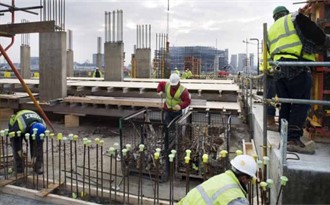
The Challenge
Preparations for hosting the London 2012 Olympic Games and
Paralympic Games involved large scale construction programmes to
deliver new venues and fit-out existing buildings and
infrastructure.
The public body responsible for developing and building the new
venues and infrastructure was the Olympic Delivery Authority
(ODA).
From the outset ODA was committed to being an exemplar in
health, safety and environmental management throughout the
planning, design and construction operation. They committed to
ensuring that London 2012 would be the 'safest and healthiest build
on record'.
ODA established very clear expectations that the health and
safety of workers was a priority and set out to provide a safe
working environment. ODA engaged and worked with contractors on
health and safety issues, both directly and through their appointed
delivery partner, to ensure that contractors also made this a
priority.
This included requirements relevant to leadership and worker
engagement. Each contractor was required to have a behavioural
safety management system in place, and to adopt a 'no blame'
culture.
The Solution
The ODA and its delivery partner demonstrated their commitment
to health and safety by commissioning and then mandating the use of
HSE's Safety Climate Tool (SCT) across companies working on the
Park.
SCT is a survey tool that captures workers', supervisors' and
managers' perceptions of health and safety issues, providing an
insight into the safety culture within an organisation.
Participants indicate the extent to which they agree or disagree
with a series of statements.
The results of these surveys give a clear indication of safety
culture within an organisation, highlighting where risks may be
present.
Companies were required to complete SCT at various intervals
whilst working on the Park and resulted in almost 10,000 responses
across 20 companies between 2008 and 2011.
The Outcome
Results from SCT gave ODA a tangible measure of the safety
culture on the Olympic Park, and through discussion with a sample
of workers, supervisors and managers, they were able to identify a
wealth of good practice that had been implemented on site in
relation to the eight factors of SCT.
The Olympic build achieved an accident frequency rate on-site of
just 0.16 per 100,000 hours worked - far less than the building
industry average of 0.55, and less than the all-industry average of
0.21.
Significantly there were no work-related fatalities on the whole
London 2012 construction programme: the only modern Olympic Games
to achieve this.
The London 2012 Games has demonstrated that it is possible and
feasible to develop high standards of health and safety, and a
culture that supports this aspiration, within the construction
sector.
Many of the areas of good practice are frequently cited as being
too complex to apply to the construction sector. This research
provides evidence that it is possible, through engagement, worker
involvement and organisational commitment to develop a strong
safety culture.
'The climate surveys were invaluable to us. Too much
time is spent discussing both culture and leading indicators in
vague and imprecise ways - prejudice not evidence. The data we
obtained from each project team and across the programme's
workforce meant that we could take specific initiatives to develop
the safety culture, and we knew that attitudes and perceptions
on-site were a wonderful pain-free surrogate for reacting after
accidents had occurred. The data and its analysis told us where we
were going and identified opportunities for improvement. '
Lawrence Waterman, Head of Health and Safety, Olympic Delivery
Authority
This case study is based on HSE's Research
Report 942 'Safety culture on the Olympic Park'.
The 2012 Olympics Learning Legacy website contains a wealth of
materials that shares the knowledge and the lessons learned from
the construction of the Olympic Park to help raise the bar within
construction and event sectors, and act as a showcase for UK
plc.
Visit the
learning legacy website to access these resources.
Read more in"
href="https://www.hse.gov.uk/aboutus/london-2012-games/lessons/case-studies.htm">
a series of short case studies that demonstrate some of the
new and practical solutions used to manage health, safety and
welfare during the London 2012 construction
project.
To use the Safety Climate Tool, or to view a demo visit our
dedicated
pages on the HSE Books website.